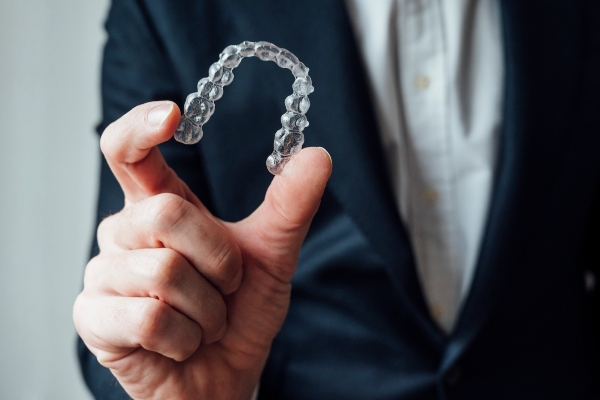 There are several myths and misconceptions about orthodontics. This is the process of correcting teeth alignment issues using appliances like clear alignments and metal braces. Treatment with orthodontics sometimes also leads to improvements in a person’s facial structure and appearance.
There are several myths and misconceptions about orthodontics. This is the process of correcting teeth alignment issues using appliances like clear alignments and metal braces. Treatment with orthodontics sometimes also leads to improvements in a person’s facial structure and appearance.
Misaligned teeth can ruin how a smile looks and can also increase the risk of issues like tooth decay and gum disease. A person's teeth and jaw joints can also become damaged as a result of stress caused by a bad bite.
Disproving four myths about treatment with orthodontics
Here are a few myths that are often spread about orthodontics treatment.
1. A general dentist cannot administer orthodontics
This is false. A general dentist has the training and experience needed to treat a wide range of orthodontic issues. They are qualified to diagnose orthodontic issues and to install appliances to fix them, like braces and clear aligners. A dentist can also help patients deal with issues that can come up during treatment, like tooth decay due to braces or another device getting in the way of oral hygiene.
2. Extractions are not compulsory
For years, it was a common practice for dentists to remove teeth before orthodontic treatment, even when the patient’s teeth were not crowded. Extracting a tooth is a quick way to make more space on a person’s jaw so their remaining teeth can move toward an improved alignment.
However, extracting teeth when not necessary can have side effects, like bone loss in the jaw. Thanks to many advances made in orthodontics, extractions are rarely performed nowadays before orthodontic treatments.
3. Children are not eligible for treatment
That is simply not true. Dentists recommend taking your child in for their first orthodontic checkup by the time they reach the age of 7. The ideal age for improving teeth alignment issues is around the ages of 9 to 14. At this stage, the patient’s jaw and facial structures are still developing, making it easier to manipulate them. Addressing misaligned teeth early on also helps correct potential alignment problems that could develop in the future.
4. Clear aligners can be used to fix any issue
While most people would prefer straightening their teeth with clear aligners due to the discretion and increased comfort that they can provide, they are not always an option. The effectiveness of clear aligners has expanded over the years as the technology has improved, but it is still not an effective way to fix misalignment caused by jaw positioning. Clear aligners work best when the patient’s bad bite is caused by the positioning of their teeth. Issues caused by poor jaw positioning typically require the use of braces.
Get straighter teeth
Ready for a straighter smile? Call or visit our Frisco clinic to learn more about the process. Our dentist will evaluate your teeth and educate you about your best options.
Request an appointment or call Price Family Orthodontics at 972-528-5519 for an appointment in our Frisco office.
Related Posts
PROPEL Orthodontics is a groundbreaking approach to accelerating orthodontic treatments while maintaining exceptional outcomes. By incorporating advanced technology and innovative techniques, this treatment offers patients a faster path to achieving their desired smiles. Understanding how this system works and its benefits can help patients make informed decisions about their orthodontic care.PROPEL Orthodontics is a system…
Orthodontic treatment focuses on fixing malocclusions ("bad bites") and other teeth alignment issues. This therapy can benefit people of all ages who want a straighter and healthier smile. Here is a closer look at what this treatment involves, what they can do, and things you need to know to help you decide if orthodontic treatment…
Wondering if surgical orthodontics is right for you? Suppose you are interested in learning more about enhancing the appearance of your smile, correcting misalignment issues, treating other oral health issues, and more. In that case, surgical orthodontics may be for you. Surgical orthodontics is an excellent choice for patients who need braces but want less…
